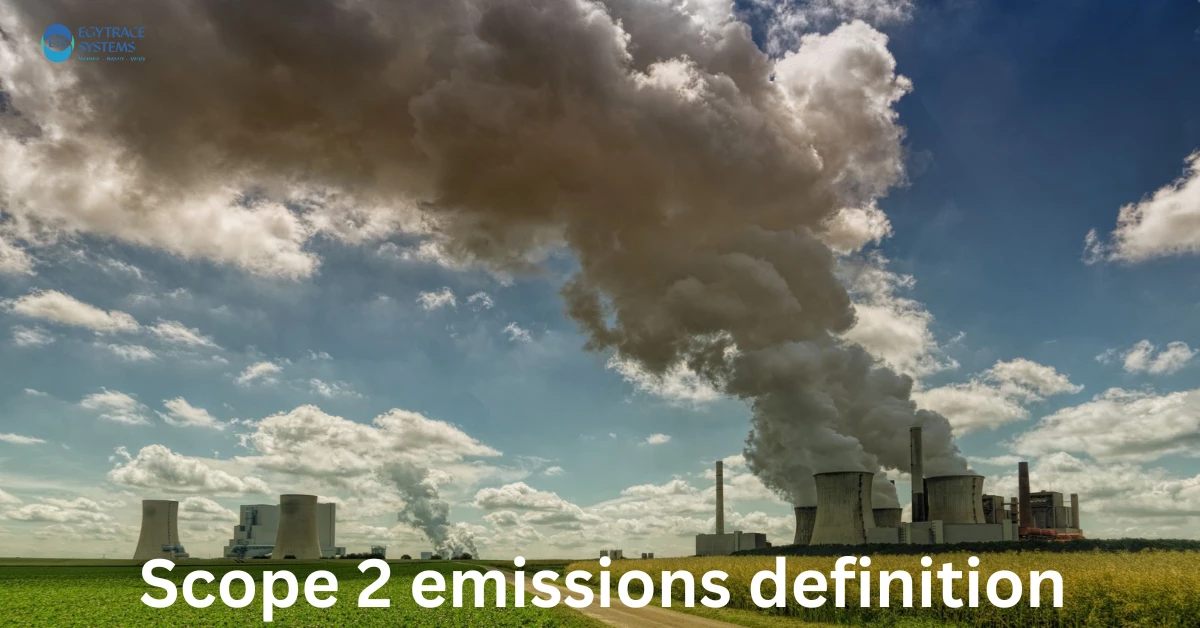Scope 2 Emissions Explained
In the journey toward sustainability, Scope 2 emissions play a pivotal role in understanding a business’s carbon footprint. These emissions are categorized as indirect greenhouse gas emissions generated from the energy a company purchases and consumes. Addressing Scope 2 emissions is essential for businesses striving to comply with environmental regulations and align with global sustainability goals.
At EgyTrace, we specialize in providing advanced digital solutions for sustainability, helping businesses, especially in Egypt, navigate the complexities of emissions management and adhere to EU Carbon Tax regulations using our automated MRV system.
What Are Scope 2 Emissions?
Scope 2 emissions refer to indirect emissions that result from the production of energy consumed by an organization. These emissions originate from the electricity, heating, and cooling purchased from external providers. While the organization does not directly emit these gases, its energy consumption is a contributing factor.
Key examples of Scope 2 emissions include:
- Electricity used to power office buildings or production facilities.
- Heating purchased for indoor spaces during winter.
- Cooling systems relying on external energy providers.
By understanding Scope 2 emissions, businesses can take actionable steps to reduce their environmental impact and improve energy efficiency.
Read: Cutting Carbon | Mastering Scopes 1, 2, 3 Emissions
Why Do Scope 2 Emissions Matter?
Managing Scope 2 emissions is vital for several reasons:
- Compliance with Regulations: With the rise of policies like the EU Carbon Tax, monitoring and reducing Scope 2 emissions is increasingly important for businesses aiming to meet global and regional standards.
- Enhancing Sustainability Goals: Addressing Scope 2 emissions contributes significantly to achieving net-zero targets and promoting environmental stewardship.
- Cost Efficiency: Transitioning to renewable energy sources can reduce dependency on traditional energy providers and lower operational costs in the long run.
Strategies to Mitigate Scope 2 Emissions
To minimize Scope 2 emissions, businesses can adopt various strategies:
- Transition to Renewable Energy Sources: Investing in solar, wind, or other renewable energy forms reduces reliance on fossil fuels.
- Energy Efficiency Measures: Implementing energy-saving practices, such as upgrading to LED lighting and optimizing HVAC systems.
- Green Procurement Policies: Partnering with energy providers committed to low-carbon practices.
The Role of EgyTrace in Managing Scope 2 Emissions
EgyTrace empowers businesses with cutting-edge tools to measure, report, and verify (MRV) their emissions accurately. Our solutions help companies:
- Automate emissions reporting processes to align with the EU Carbon Tax.
- Identify opportunities to optimize energy consumption and reduce Scope 2 emissions.
- Develop tailored sustainability strategies for long-term impact.
Conclusion: Embracing Sustainability
Understanding and addressing Scope 2 emissions is no longer optional for businesses committed to sustainability. By taking proactive measures, companies can reduce their environmental impact, enhance compliance with global standards, and demonstrate leadership in sustainability practices.
At EgyTrace, we stand ready to support businesses on their journey toward sustainability. Let’s work together to build a greener future.

